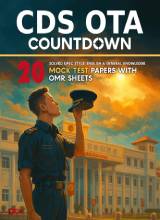IAF gets its first Apache attack helicopter from Boeing, 21 more to come
The Boeing Company handed over to the Indian Air Force (IAF) on Friday the first of 22 Apache attack helicopters that India contracted to buy in September 2015 for about $3 billion at current prices.
An IAF officer, Air Marshal AS Butola, travelled to Boeing’s helicopter production facility at Mesa, Arizona, to attend the handing over ceremony, alongside US government representatives.
The IAF is buying the latest version of the Apache, designated the AH-64E (I) Apache Guardian. The first batch of 4-6 helicopters will be shipped to India in July, says the defence ministry.
The Apaches are being acquired through a hybrid contract. The helicopter itself has been contracted through a “direct commercial sale” (DCS) with Boeing. However, the radar and assortment of weaponry, including missiles, rockets and cannon bullets, are being acquired directly from the Pentagon through a “foreign military sale” (FMS).
The Apache is widely acknowledged to be the world’s most lethal combat helicopter, having flown about a million mission hours in conflicts from the First Gulf War in 1991 to the on-going fighting in Afghanistan.
It can operate by day or night with equal effectiveness, flying just metres above the ground and sheltering behind trees and sand dunes. Its advanced Longbow radar picks up enemy armoured vehicles targets that are then destroyed with anti-tank missiles, air-to-surface rockets or a chain gun that sends 625 rounds per minute ripping into armoured vehicles. Designed to operate as the airborne component of a highly mobile, armour-heavy strike corps, the Apache has been dubbed the “flying tank”.
“The ability of these helicopters, to transmit and receive the battlefield picture, to and from the weapon systems through data networking, makes it a lethal acquisition,” said the defence ministry on Saturday.
Ground combat experts say the Apache should have been a straightforward buy of a premier tank-killing platform for the army’s three strike corps, instead of joining the IAF fleet. Former defence minister, AK Antony, after deciding that the new “Army Aviation Corps” would fly the army’s tactical support helicopters, succumbed to IAF pressure and allocated them the Apache.
Consequently, the 22 Apaches, distributed between two air force squadrons, will have the wartime role of “suppression of enemy air defences (SEAD)”. This refers to the US doctrine of destroying enemy air defence radars and missile batteries near the border, allowing fighter aircraft to cross into enemy airspace undetected.
Army aviation specialists reject this notion, arguing that the relatively slow-flying Apaches would be quickly picked up to Chinese or Pakistani surveillance radars and then shot down by their dense network of anti-air missiles, guns and fighter aircraft. They say the US Army could use Apaches for SEAD only in highly asymmetrical conflicts, where the US enjoyed overwhelming air superiority.
Acknowledging the army’s need for the Apache, a separate procurement has been kicked off for buying six Apache Guardians for the army to support the strike corps. Last June, the US Congress was notified about the proposed sale to India of six AH-64E Apache helicopters for an estimated cost of $930 million.
These are for the first of three units of Apaches that the army plans to raise, one for each plains strike corps, i.e. Mathura-based 1 Corps, Ambala-based 2 Corps and Bhopal-based 31 Corps. Each squadron would have ten helicopters, and a thirty per cent reserve in depots to replenish losses caused by accidents or casualties.
Separately, the IAF and army are acquiring the Light Combat Helicopter (LCH) that has been designed and developed by Hindustan Aeronautics Ltd and is now close to being operationally certified. The LCH is a lighter helicopter that is optimised for providing supporting fire to infantry soldiers in high altitude fighting. The heavier, bigger Apache is more suited to mechanised warfare in plains terrain.
There is no “Make in India” component, or transfer of technology, in the Apache deal, with the helicopter to be built entirely in the US, then defence minister Manohar Parrikar informed the Lok Sabha on November 28, 2014.
However, the US Army is providing training at Fort Rucker, Alabama to the IAF pilots and maintenance personnel who will operate the Apache fleet.






 Order Now on Amazon
Order Now on Amazon
